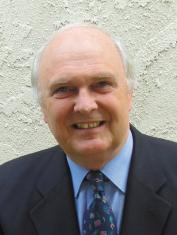Science Driving Innovation
Fall
2015
Special Feature
Science Driving Innovation
Investing in research reaps huge economic rewards
By:Robert G. W. Brown, Chief Executive Officer, American Institute of Physics in College Park, MD
 Innovation is the lifeblood of next-generation products, competitive business, growth, employment, and wealth creation. Modern physics research and development, as practiced in corporate and government research laboratories, deals heavily in applied science and engineering, often with a focus on the path to invention.
Innovation is the lifeblood of next-generation products, competitive business, growth, employment, and wealth creation. Modern physics research and development, as practiced in corporate and government research laboratories, deals heavily in applied science and engineering, often with a focus on the path to invention.
So important is the connection between science and innovation that the upcoming 2016 Sigma Pi Sigma Quadrennial Congress just outside of San Francisco will be devoted to the topic; its theme will be “Unifying Fields: Science Driving Innovation.”
Innovation improves our quality of life, making possible a continuous stream of new technologies and better ways of doing things. But remember that innovation is a product of knowledge and discoveries accumulated over decades. Take an everyday example of an electronic mobile device—your smart phone or tablet. To bring such products to market, innovators successfully exploited advances in the physics of semiconductor devices, such as the creation of blue and green LEDs and laser diodes, progress in nano-micro silicon electronics, new kinds of liquid crystals, the development of ultrastrong glass, and the formulation of novel polymers. Display technologies and supercompact electronics are made possible by physics research done over the last 20 years—one could even argue 80 years—involving millions of dollars of up-front research investment. The payoff? Billions of dollars pumped into the global economy.

With this degree of return on investment (ROI), it seems obvious that sales revenue and taxes ought to be invested in future research to support the future economy. Yet today’s Western world is reluctant to make serious investments or take the risks necessary for high payoff. As a result, we have limited our capacity to build competitive new products. Big R&D initiatives are unpredictable, expensive, and often beset with failures en route to successful innovation. Compared to our Asian competitors, who have come to dominate global manufacturing, we do not invest much in the translating of physics into devices and products. Much of the technology we purchase today comes from Asia, and that region benefits from the wealth creation. By diluting the investment and risk, we siphon the potential ROI.
The risks of translating science to products are so recognized that they inspired the term “Valley of Death,” which refers to the probability that a start-up company will die before financiers can recoup their investments. The current trend is toward immediate or short-term payoffs, but we must advocate for the long term, the big investments in science that will help the United States maintain (or perhaps regain) its global leadership as an innovation superpower.
The following feature articles focus on innovation and how R&D activities based on solid science drive our future economy. Meet an SPS member helping to push forward new products as an intern at Google. Test your knowledge about how past physics experiments have driven today's innovations. Learn about new innovations in education that began with physics classrooms. Explore recent developments at the Stanford Linear Accelerator Center, one of the sites you will have the opportunity to tour at the upcoming Sigma Pi Sigma Congress. //
Dig Deeper
Learn more about the 2016 Quadrennial Physics Congress here.
